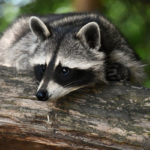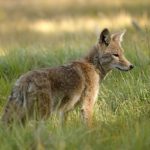Yes, snakes are carnivores. They primarily feed on other animals, such as rodents, birds, and insects, depending on their species and habitat.
Key Takeaways
- Snakes are predominantly carnivores, thriving on a diet of animal prey.
- They possess unique anatomical and physiological adaptations that make them efficient predators.
- Their diet ranges from insects and amphibians to larger mammals and birds.
- Occasional dietary deviations are exceptions rather than the rule.
- Debunking misconceptions about snake diets fosters a deeper understanding and appreciation of these reptiles.
- Providing a diet that mirrors their natural feeding habits is crucial for pet snakes’ health and well-being.
- Understanding snake behavior and dietary needs is essential for both wild and captive snakes.

When you think of a snake’s diet, what comes to mind? Perhaps images of slithering hunters devouring their prey whole, fangs piercing through fur and feathers. Snakes have long captivated our imagination and curiosity, partly due to their mysterious and often misunderstood eating habits. But are snakes strictly carnivores, or do their diets include more variety than we might expect?
At AAAC Wildlife Removal, we encounter these fascinating reptiles frequently and have a deep understanding of their behaviors and dietary needs. In this article, we’ll dive deep into the dietary world of snakes to uncover the truth. From their unique anatomical adaptations that make them efficient predators to the diversity of their prey across different species, we’ll explore the intricate details of what snakes eat and why. So, whether you’re an animal enthusiast, a curious reader, or a pet snake owner, join us on this journey to answer the question: Are snakes carnivores?
Understanding Carnivory
Definition of Carnivory
Carnivory is a dietary habit characterized by the consumption of animal flesh. Carnivores are animals that primarily eat other animals, relying on meat as their main source of nutrients. This dietary strategy is seen across various species, from large predators like lions and wolves to smaller ones like spiders and mantises.
To understand the concept better, let’s look at a few well-known carnivores. Lions, often called the kings of the jungle, hunt and consume large herbivores such as zebras and antelopes. Wolves, working in packs, bring down animals like deer and elk. Even in the insect world, the praying mantis preys on other insects with its swift and deadly strikes. These examples illustrate the wide range of animals that have adapted to a carnivorous lifestyle, using various hunting and feeding strategies to survive.
Snake Physiology and Diet
Snake Anatomy
Snakes possess unique anatomical features that make them highly effective predators. Their flexible jaws, for instance, allow them to consume prey much larger than their head. This adaptation is due to the presence of highly stretchable ligaments in their jaw structure, enabling them to open their mouths wide and swallow prey whole. Additionally, snakes have backward-facing teeth that grip and hold onto their prey, preventing escape.
Diet and Nutritional Needs
The nutritional requirements of snakes are met primarily through their carnivorous diet. They rely on protein and fat obtained from their prey to maintain their health, grow, and reproduce. Unlike herbivores or omnivores, snakes do not need to process fibrous plant material, which simplifies their digestive systems. This allows them to focus entirely on extracting nutrients from animal flesh.
Snakes have evolved to be efficient hunters, with some species specializing in specific types of prey. For example, a garter snake might feed on small amphibians and fish, while a python targets larger mammals. This specialization ensures that each species can thrive in its particular habitat, utilizing available food resources to their advantage.
In summary, snakes are anatomically and physiologically designed to be carnivores. Their unique jaw structure and digestive system are perfectly suited to a diet consisting mainly of other animals, highlighting their role as effective and specialized predators in the animal kingdom.
Are Snakes Carnivores?
Generally speaking, snakes are indeed carnivores. They predominantly rely on a diet of other animals, ranging from small insects and amphibians to larger mammals and birds. This carnivorous behavior is evident in the vast majority of snake species, which have evolved various hunting and feeding strategies to capture and consume their prey.
For instance, a small garter snake might hunt insects, earthworms, and small amphibians, while a large python could prey on mammals such as rodents, birds, and even deer. Some snakes, like the king cobra, are specialized in hunting other snakes. Despite this overwhelming tendency towards carnivory, there are occasional deviations. Some species have been observed consuming eggs or carrion, which shows a slight degree of dietary flexibility.
However, these occurrences are exceptions rather than the norm. Overall, the evidence strongly supports that snakes are primarily carnivorous, utilizing their anatomical and physiological adaptations to thrive on a meat-based diet.
Misconceptions About Snake Diets
There are several common misconceptions about snake diets that need addressing. One prevalent myth is that snakes might eat fruits or vegetables. This belief likely stems from misunderstandings or anecdotal reports, but it is not supported by scientific evidence. Snakes lack the necessary digestive adaptations to process plant material efficiently.
Another misconception is that all snakes are dangerous predators of large mammals or even humans. In reality, most snake species prey on much smaller animals and pose no significant threat to humans. Cultural depictions of snakes, such as in folklore and media, often exaggerate their feeding habits and behaviors, leading to unfounded fears and myths.
Additionally, some people believe that snakes can go for long periods without eating, which, while true for certain species that can fast for extended durations, does not apply universally. Each snake species has its own specific dietary needs and feeding frequency. Dispelling these misconceptions is crucial for fostering a better understanding and appreciation of snakes and their role in the ecosystem.
Importance of Diet in Captivity
When it comes to keeping snakes as pets, providing an appropriate diet is crucial for their health and well-being. Unlike their wild counterparts, captive snakes rely entirely on their owners to meet their dietary needs. It is essential to replicate their natural diet as closely as possible.
For most pet snakes, this means feeding them appropriately sized rodents, such as mice or rats, which are readily available from pet stores. It’s important to note that feeding live prey can be risky as it may harm the snake, so many owners opt for pre-killed or frozen-thawed prey.
Additionally, some snake species might require more specialized diets, such as birds, fish, or amphibians. Ensuring that the diet is nutritionally balanced and varied is key to preventing health issues. Regular feeding schedules, appropriate portion sizes, and clean water are also vital components of proper snake care. By understanding and meeting the dietary needs of their snakes, pet owners can help ensure their pets lead healthy and thriving lives in captivity.
Conclusion
In summary, snakes are predominantly carnivores, designed by nature to thrive on a diet of animal prey. Their unique anatomical and physiological adaptations make them efficient predators, capable of consuming a wide range of animals, from insects and amphibians to larger mammals and birds. While occasional dietary deviations occur, they are exceptions rather than the rule.
Addressing and debunking common misconceptions about snake diets helps in fostering a deeper understanding and appreciation of these fascinating reptiles. For those keeping snakes as pets, providing a diet that closely mirrors their natural feeding habits is crucial for their health and well-being.
At AAAC Wildlife Removal, we have seen firsthand the importance of understanding snake behavior and dietary needs, both in the wild and in captivity. We hope this article has shed light on the question, “Are snakes carnivores?” and inspired a greater appreciation for these remarkable creatures.














